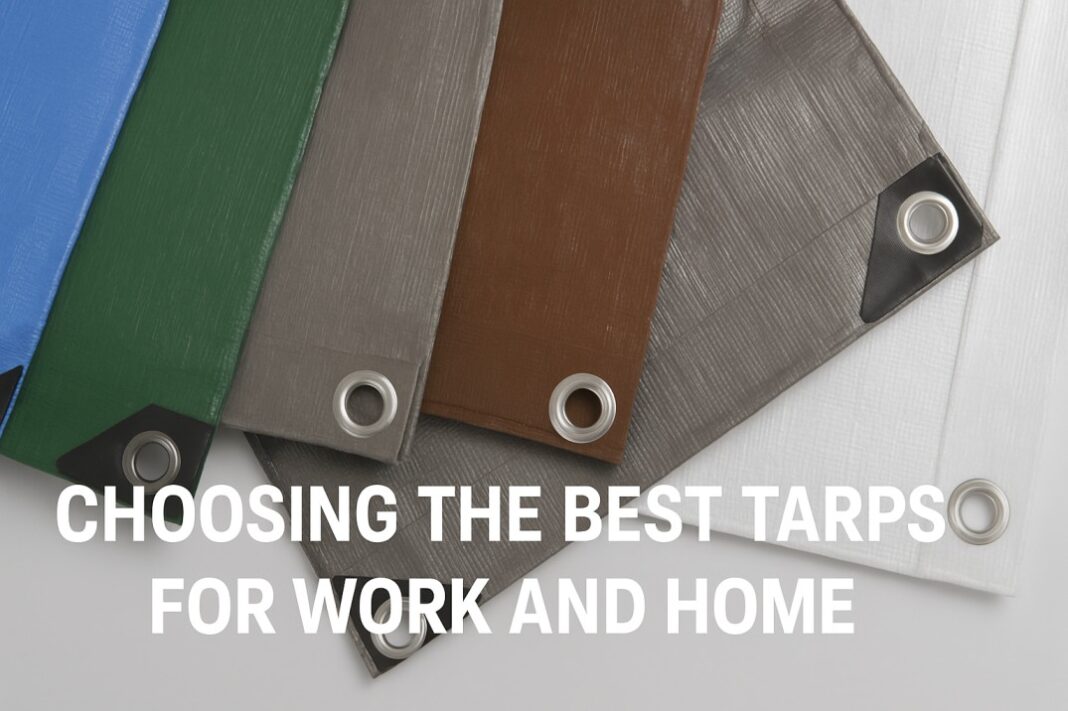Tarps are one of those simple tools that most people don’t think about until they need one. Then the questions begin: which type, what size, and how durable should it be? The truth is that tarps come in many forms, each with strengths and weaknesses depending on the job. Choosing the best tarps for work or home projects means understanding how materials, thickness, and design affect performance.
Why tarps matter
A tarp is more than just a sheet of fabric. It’s protection. On a job site, it keeps building materials dry. At home, it shields outdoor furniture from rain or covers a car against dust. Campers use tarps for shelter, while gardeners rely on them to suppress weeds or haul debris. The versatility of a tarp is the reason they’re found in tool sheds, garages, and workshops everywhere.
But not all tarps are equal. A thin plastic sheet might work for a quick cover, but it won’t last long in tough conditions. On the other hand, heavy-duty tarps can endure years of weather exposure and demanding use. Knowing the difference is key to buying the right one.
Common tarp materials
Several materials dominate the tarp market, each with unique benefits:
-
Polyethylene (poly) tarps: Lightweight, waterproof, and affordable. They’re perfect for temporary covers like camping shelters or quick fixes.
-
Canvas tarps: Made from cotton or polyester, these are breathable and durable. They resist mildew and work well for covering equipment that needs airflow.
-
Vinyl tarps: Heavy-duty and resistant to chemicals, oil, and abrasions. They’re often used for trucking, industrial work, or long-term outdoor storage.
-
Mesh tarps: Designed to let some air and light through. Useful for shade structures, fencing, or covering loads that need ventilation.
Each material fits a different situation. Picking the wrong one can lead to leaks, tears, or wasted money.
Measuring durability
Durability is often measured by thickness, expressed in mils (thousandths of an inch). Light-duty tarps may be 5 to 7 mils thick, while heavy-duty versions can exceed 20 mils. Thicker tarps usually last longer and resist tearing, but they’re heavier and more expensive.
The weave count is another indicator. A higher count means stronger reinforcement, which matters for tarps exposed to wind or constant tension. Grommet spacing is important too. Wider spacing means less stress on the edges, preventing rips.
Everyday uses
The best tarps serve countless roles in daily life:
-
Construction: Covering roofing projects, scaffolding, or tools.
-
Landscaping: Protecting plants from frost, creating weed barriers, or hauling soil.
-
Recreation: Building a makeshift shelter, ground cover for tents, or shade at the beach.
-
Transport: Securing loads in trucks or trailers.
-
Home projects: Covering furniture during painting or shielding decks from weather.
The right tarp can save time, money, and frustration in each of these settings.
Price versus performance
Cheap tarps have their place. If you need a quick, disposable cover, they’re ideal. But for regular use, investing in quality pays off. A good canvas or vinyl tarp can last years, even under tough conditions. It’s often more economical to buy one strong tarp than several weak ones that tear easily.
This balance between cost and durability is why so many people research carefully before buying. Online guides, hardware store advice, and specialty retailers all provide comparisons that help narrow the choices.
For anyone comparing materials or looking for a range of options, suppliers specializing in coverings often highlight what makes the best tarps stand out. From heavy-duty vinyl to lightweight poly, these resources help match the tarp to the task.
Caring for tarps
Even the strongest tarps need care. Folding them properly prevents creases and weak spots. Cleaning off dirt, sap, or chemicals extends their lifespan. Storing them in a cool, dry place helps avoid mold or rot, especially with canvas.
Repair kits are handy too. A small tear can often be patched instead of replacing the whole tarp. Reinforcing grommets or edges with tape or fabric can also extend usability.
Trends in tarp design
Modern tarps are evolving. Reinforced corners, UV-resistant coatings, and fire-retardant treatments are now common. Some companies are even experimenting with eco-friendly materials made from recycled plastics or organic fibers. As demand grows, especially in industries like logistics and construction, expect more customization in color, size, and performance.
Tarps may look simple, but they play an essential role in both professional and personal projects. The best tarps are those that match the job—whether it’s a lightweight poly sheet for camping or a heavy vinyl cover for long-term storage. By paying attention to material, thickness, and durability, it’s easy to find the right tarp for any situation.




